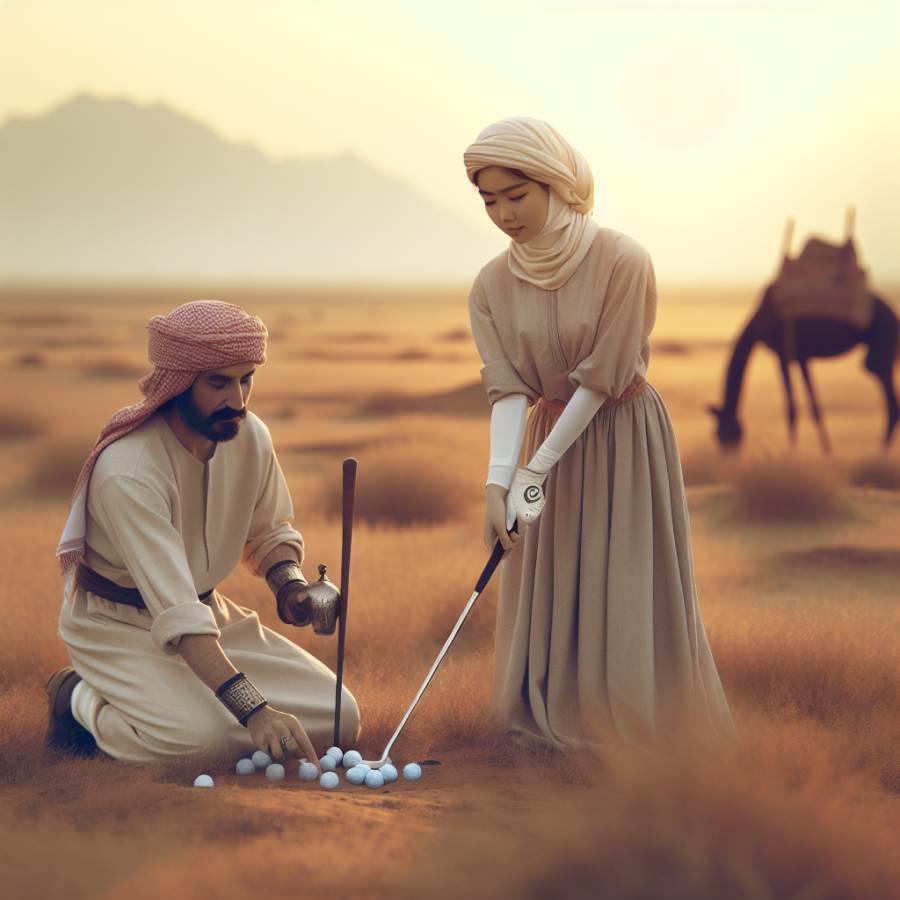Evolution of Golf: From a Simple Pastime to an Internationally Recognized Sport
The sport we now know as golf has a rich and storied history, dating back several centuries. This humble game of hitting a small white ball into a hole started as a simple pastime and evolved over the years into an internationally recognized sport, played and watched by millions worldwide.
The origins of golf are often traced back to ancient times. Some historians believe it originated from the Roman game of paganica, where participants used a bent stick to hit a leather ball. Others associate its roots with the Chinese game of chuiwan, which involved hitting a ball into holes with a club-shaped tree branch.
Despite these theories, the modern game of golf is widely accepted to have been developed in Scotland during the Middle Ages. Initially, it was a simple game for shepherds and common folk to pass the time. They would hit pebbles around the sand dunes using a stick or club.
By the 15th century, golf had evolved significantly and was considered a national pastime in Scotland. The game became so popular that it resulted in King James II banning it in 1457, as it was interfering with the military's archery practice. Despite several attempts to suppress the game, its popularity continued to grow.
Over the next several centuries, golf evolved further, and clear rules were established. The game was traditionally played on public lands, but by the 19th century, golf clubs were forming and private golf courses were being built. The St. Andrews Golf Club formed in 1754 and established the rules of play.
Golf's popularity made its way to the United States in the late 19th century, and by the early 20th century, it had become a well-recognized sport in the country. The first 18-hole course in the United States was on a sheep farm in Downers Grove, Illinois, in 1892: it was a key development in the expansion of golf from a pastime to a recognized sport.
The first professional golf tournaments were held around this time. In 1860, the first Open Championship, now one of the four major championships in professional golf, was held in Scotland. As time went on, golf tournaments garnered more attention worldwide, attracting professional golfers and forming the basis of today's international professional golf scene.
The establishment of various golf associations further legitimized the sport.
Read also:
Exploring the Line: Are Golf Pants Really Considered Business Casual?
The Ancients and Their Versions of Golf: Exploring the Earliest Precursors of the Game
Long before the neatly mown fairways and meticulously manicured greens of modern golf courses, rudimentary versions of this much-adored sport existed. While the Scots are widely credited with the invention of golf in the form of the game we recognize today, historical records and legends tell tales of ball-and-stick games that resemble golf, played hundreds and even thousands of years ago, across various cultures and continents.
The Romans, it appears, had a version of golf called Paganica, a game in which participants used a bent stick to hit a stuffed leather ball. Often played in expansive open fields, the objective was to hit the ball into a target several hundred yards away. With its use of a 'club' and specific target, Paganica bears an uncanny resemblance to modern golf, and many historians view it as the first real predecessor of the sport we love today.
It wasn’t just the Romans who enjoyed hitting a ball with a stick. In China, during the Song Dynasty, a game called Chuiwan was quite popular, especially among the nobles and royals. The term ‘Chuiwan’ can be translated as 'ball-hitting' and involved driving a ball into a hole using a set of up to 10 clubs. The unique aspect of Chuiwan was the design of the 'course,' often an ornamental garden with ‘holes’ represented by colored stakes or flags. The similarities between Chuiwan and modern golf are numerous, leading some historians to suggest that the game may have influenced, or been the direct progenitor of golf.
Even indigenous cultures seem to have had their own iterations of golf. The Native American tribe Choctaw played a similar ball-and-stick game called 'Toli,' although it appears this game had more in common with lacrosse than golf. The Maoris of New Zealand enjoyed a game known as Ki-o-rahi, a fast-paced, physically demanding sport involving a small round ball.
On the British Isles, where modern golf would eventually take form, early forms of the game can be traced back to the Middle Ages. In particular, the game of 'Cambuca' in England, and 'Shinty' in Scotland. These games involved hitting a ball with a curved stick, along similar lines to modern hockey. Later on, the Scots developed a game known as 'Gowf', a term that means to 'strike or cuff'.




